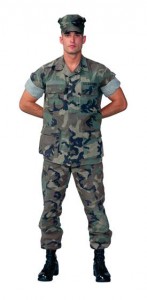 Pop quiz – What does a soldier spend most of his time doing?
Pop quiz – What does a soldier spend most of his time doing?
Someone might correctly point out that a soldier’s job is to defend his or her country by being ready to fight. So, do they spend most of their time fighting? In most armies, the answer is “no,” even when their country is at war. Soldiers spend most of their time waiting, practicing and preparing for the (relatively) brief times that they are in combat.
Military leaders know this, of course, and therefore create activities, training, simulations and duties to occupy the downtime between combat circumstances. Thus, when combat does occur, their troops are well prepared to win.
What about competitive intelligence professionals? What do you spend most of your time doing?
Many might guess that you and I are constantly engaged in projects for internal (or, for consultants, external) clients. That might be true for some people but my experience is that there can be significant downtime for most. By “downtime,” I mean that there is time when there is not a specific pressing project or task to complete. Maybe the management focus is on another issue or leaders are reacting to other problems. This time is a breathing spell that may be short or long. However, we know that it will end, perhaps abruptly when a new request for urgent competitive intelligence arrives.
How can the time between competitive intelligence projects be used productively?
(I have a short survey at http://jthawes.limequery.com/17155/lang-en on Competitive Intelligence Monitoring. Please add your opinion.)
I think that there are five R’s to remember to make this time useful.
- Rest: Competitive intelligence projects are demanding. They require intense, time constrained, high impact analysis. They force practitioners to explore what they do not know, explain what is complex and risk recommendations to experienced, skeptical people. This is draining. Thus, simply recharging is often the best downtime activity for many people.
- Relationships: It is easier to approach people and develop working relationships without the high pressure of a critical competitive intelligence project. Between projects is a good time to thank the people that have helped you, introduce yourself to those that you might help in the future and repair the strains that have developed through the organization. Successful relationships will pay back many times over and is a wise investment for you.
- Recruiting: No network is big enough for competitive intelligence. Adding internal or external contacts to a network is a never-ending process but may be neglected in the hurriedness of a project. Downtime between projects is a good time to extend your networks by introducing the value of competitive intelligence, by emphasizing your role in the organization and by highlighting the benefits of competitive intelligence to others. When done well, those benefits attract others to consume or contribute competitive intelligence. This helps you.
- Research: Of course, you do research for each competitive intelligence project. What you may not do enough of is the broader type of monitoring of the competitive environment not specifically directed through a project. However, that type of research is critical to provide greater context to management. It helps competitive intelligence serve not only as an “after the fact” analysis function but also as an anticipatory service. This kind of research allows you to suggest competitiveness issues to management.
- Reflection: In surveys that I have conducted, many competitive intelligence professionals report that they receive little direct feedback about their work. Part of the reason seems to be the pace of the projects and the short attention span of management. Whatever the causes, they do not obviate the need for meaningful reflection about what is working and what is not working. A competitive intelligence professional is well served to ask and answer basic questions periodically. How am I delivering value? How are my contributions affecting important decisions? How is my positive impact increasing? What improvements would increase my value?
Downtime is not idle time. Just like for a good soldier in the Army, what happens between the projects determines the outcome of the projects. It is the “in between” time that distinguishes the amateur from the professional. Using the five R’s helps make downtime productive for the competitive intelligence professional.
What do you think?


[…] This post was mentioned on Twitter by Tom Hawes, Tom Hawes. Tom Hawes said: See http://tinyurl.com/2ane5su for a description of "The 5 R’s of Competitive Intelligence Downtime" – make time between projects useful. […]
[…] like Tom Hawes’ comparison of CI with military preparedness. Soldiers spend most of their time training and […]